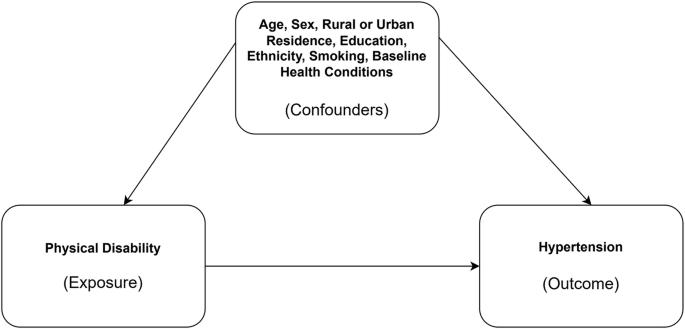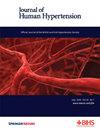身体残疾和高血压发生的风险:一项前瞻性队列分析。
IF 3.4
4区 医学
Q2 PERIPHERAL VASCULAR DISEASE
引用次数: 0
摘要
高血压仍然是世界范围内发病率和死亡率的主要原因,但其与身体残疾的关系在基于人群的纵向研究中尚未得到充分探讨。我们使用来自英国家庭纵向研究的数据进行了前瞻性队列分析。16岁及以上无基线高血压的个体(N = 19,319)从第10波(2018-19)到第14波(2022-23)进行随访。身体残疾被定义为自我报告的困难,持续或预计持续至少12个月,在身体和感觉功能的八个领域中的任何一个。在控制了年龄、性别、居住地点(城市/农村)、受教育程度、种族、吸烟状况和基线健康状况等因素后,采用修正泊松回归稳健标准误差来估计高血压事件的校正相对风险(rr)。在四年的随访中,19319名参与者中有610人(3.2%)患上了高血压。在完全调整模型中,任何身体残疾的个体患高血压的风险都显著升高(RR = 1.65; 95% CI:1.39-1.97; p . 1)本文章由计算机程序翻译,如有差异,请以英文原文为准。

Physical disability and risk of incident hypertension: a prospective cohort analysis
Hypertension remains a leading cause of morbidity and mortality worldwide, yet its relationship with physical disability has been underexplored in population-based longitudinal studies. We conducted a prospective cohort analysis using data from the UK Household Longitudinal Study. Individuals aged 16 and older without baseline hypertension (N = 19,319) were followed from Wave 10 (2018–19) to Wave 14 (2022–23). Physical disability was defined as self-reported difficulty, lasting or expected to last at least 12 months, in any of eight domains of physical and sensory functioning. Modified Poisson regression with robust standard errors was used to estimate adjusted relative risks (RRs) for incident hypertension, controlling for age group, sex, residential location (urban/rural), educational attainment, ethnicity, smoking status, and baseline health conditions. Over a four-year follow-up, 610 of 19,319 participants (3.2%) developed hypertension. In fully adjusted model, individuals with any physical disability had a significantly elevated risk of hypertension (RR = 1.65; 95% CI:1.39–1.97; p < 0.001) compared to those without disability. Compared to individuals with no disability, those with one physical disability had an RR of 1.29 (95% CI:1.01–1.64; p = 0.043), while those with two or more disabilities had an RR of 2.10 (95% CI:1.69–2.59; p < 0.001). A linear trend was observed across increasing number of disabilities (RR per additional domain = 1.43; 95% CI:1.29–1.59; p < 0.001). By type, the highest risks were observed for coordination or balance impairment (RR = 2.12; 95% CI:1.58–2.84), mobility impairment (RR = 2.03; 95% CI:1.66–2.48), and sight impairment (RR = 1.80; 95% CI:1.27–2.56), all p < 0.001. Physical disability was a significant independent predictor of incident hypertension in this population-based cohort.
求助全文
通过发布文献求助,成功后即可免费获取论文全文。
去求助
来源期刊

Journal of Human Hypertension
医学-外周血管病
CiteScore
5.20
自引率
3.70%
发文量
126
审稿时长
6-12 weeks
期刊介绍:
Journal of Human Hypertension is published monthly and is of interest to health care professionals who deal with hypertension (specialists, internists, primary care physicians) and public health workers. We believe that our patients benefit from robust scientific data that are based on well conducted clinical trials. We also believe that basic sciences are the foundations on which we build our knowledge of clinical conditions and their management. Towards this end, although we are primarily a clinical based journal, we also welcome suitable basic sciences studies that promote our understanding of human hypertension.
The journal aims to perform the dual role of increasing knowledge in the field of high blood pressure as well as improving the standard of care of patients. The editors will consider for publication all suitable papers dealing directly or indirectly with clinical aspects of hypertension, including but not limited to epidemiology, pathophysiology, therapeutics and basic sciences involving human subjects or tissues. We also consider papers from all specialties such as ophthalmology, cardiology, nephrology, obstetrics and stroke medicine that deal with the various aspects of hypertension and its complications.
 求助内容:
求助内容: 应助结果提醒方式:
应助结果提醒方式:


